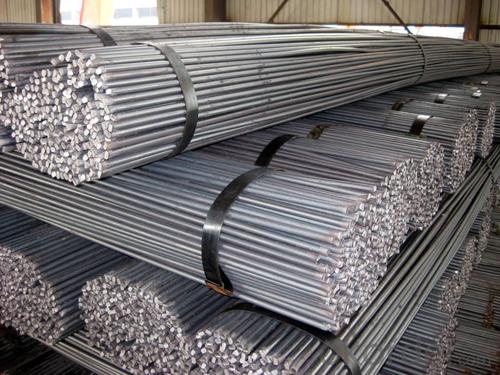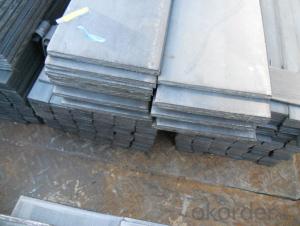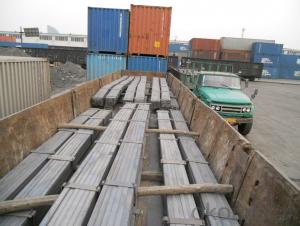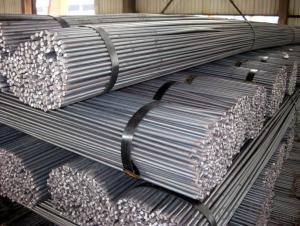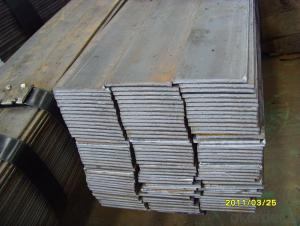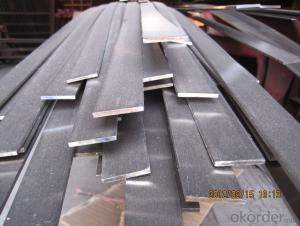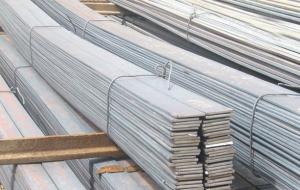high quality flat bar hot rolled GB Q235 3-30MM
- Loading Port:
- Tianjin
- Payment Terms:
- TT OR LC
- Min Order Qty:
- 25 m.t.
- Supply Capability:
- 60000 m.t./month
OKorder Service Pledge
OKorder Financial Service
You Might Also Like
lat bar Details:
| Minimum Order Quantity: | Unit: | m.t. | Loading Port: | ||
| Supply Ability: | 10000 | Payment Terms: | Package: | Steel Packing |
Product Description:
Product Description:
Specification of Mild Steel Flat Bar
Commodity: Mild Steel Flat Bar
Standard: GB;JIS
Material: Q195-235;SS400
Brand name: FLATSPACE
Origin place: China
Thickness: 3mm-30mm
Width:20mm-200mm
Length: Max 12m
Certification: SGS/BV
Chemical composition of Q235
Alloy No | Grade | Element(%) | ||||
C | Mn | S | P | Si | ||
Q235 | B | 0.12—0.20 | 0.3—0.7 | ≤0.045 | ≤0.045 | ≤0.3 |
Physical properties of Q235
Alloy No | Grade | Yielding strength point(Mpa) | Tensile strength (Mpa) | Elongation after fracture(%) | ||||||
Thickness (mm) | Thickness (mm) | |||||||||
≤16 | >16--40 | >40--60 | >60--100 | ≤16 | >16--40 | >40--60 | >60--100 | |||
≥ | ≥ | |||||||||
Q235 | B | 235 | 225 | 215 | 205 | 375--500 | 26 | 25 | 24 | 23 |
Usage/Applications of Mild Steel Flat Bar
Widely used for construction, Machinery manufacturing, Iron tower steel structure, Shipbuilding; Steel grating, Staircase, Bridge, Viaduct, Railway spare parts, Boilers making etc.
Packaging & Delivery of Mild Steel Flat Bar
Packaging Details: The Mild Steel Flat Bars are packed in bundles and loaded in 20 feet/40 feet container, or shipped by bulk cargo ,also we can do as customer's requirements.
Delivery Details:30~45 days upon the receipt of buyer payment by T.T. or L/C.
Production Flow of Mild Steel Flat Bar
The Mild steel flat bar is made through three processes:
1.Feeding the material: Feeding the row material (the steel plate) to Slitting Line.
2.Slitting:The steel plate would be slitted into expected width by lengthways cutter.
3. Leveled and cutting: The plat bar would be ground into level by the grinder and then cut into required length
- Q: Are steel flat bars suitable for the construction of walkways or catwalks?
- Yes, steel flat bars are suitable for the construction of walkways or catwalks. Steel flat bars are known for their strength, durability, and versatility, making them an ideal choice for such applications. They provide a sturdy and reliable surface for walking, capable of withstanding heavy loads and high foot traffic. Additionally, steel flat bars can be easily fabricated, cut, and welded to meet specific design requirements, allowing for customization and flexibility in construction projects. Their resistance to corrosion and weathering also ensures that walkways or catwalks made from steel flat bars will have a longer lifespan and require minimal maintenance. Overall, steel flat bars are a popular and widely used material for constructing walkways or catwalks due to their strength, durability, and adaptability.
- Q: Can steel flat bars be used for manufacturing machine guards?
- Yes, steel flat bars can be used for manufacturing machine guards. Steel is a strong and durable material, making it suitable for protecting machines and providing safety barriers. Steel flat bars can be easily cut and shaped to fit the specific requirements of the machine guard, allowing for custom designs and sizes. Additionally, steel flat bars can withstand impact and provide a sturdy barrier against potential hazards in industrial environments. Overall, steel flat bars are a commonly used material for manufacturing machine guards due to their strength, versatility, and ability to provide adequate protection.
- Q: Are steel flat bars suitable for architectural cladding?
- Yes, steel flat bars can be suitable for architectural cladding. They offer durability, strength, and versatility in design. Steel flat bars can be shaped, cut, and welded to create different patterns and textures, allowing for unique and visually appealing cladding solutions. Additionally, steel flat bars can be treated with various coatings to enhance their resistance to corrosion, making them suitable for long-term use in exterior applications.
- Q: How do steel flat bars perform in terms of thermal conductivity?
- Steel flat bars have a relatively high thermal conductivity compared to other materials. This means that they are quite efficient in conducting heat. When exposed to high temperatures, steel flat bars quickly absorb and distribute heat throughout their structure. Conversely, steel flat bars also dissipate heat efficiently, allowing them to cool down rapidly. This property makes steel flat bars suitable for various applications where thermal conductivity is important, such as in the construction industry, where they are commonly used in heat transfer systems, heat exchangers, and other thermal management applications.
- Q: Can steel flat bars be used for making brackets or supports for industrial machinery?
- Yes, steel flat bars can be used for making brackets or supports for industrial machinery. Steel flat bars are known for their strength, durability, and resistance to wear and tear, making them an ideal choice for providing structural support and stability to industrial machinery. Additionally, steel flat bars can be easily fabricated, welded, and customized to meet the specific requirements of different machinery, making them a versatile option for constructing brackets and supports.
- Q: What are the different methods of bending steel flat bars?
- There are several different methods of bending steel flat bars, depending on the specific requirements and constraints of the project. Some of the most common methods include: 1. Manual bending: This method involves using a manual bending machine or tools such as a vise and hammer to bend the steel flat bar. It requires physical effort and precision to achieve the desired bend angle and shape. 2. Heat bending: Heat bending involves heating the steel flat bar to a high temperature using a torch or furnace, and then bending it while it is still hot. This method is useful for achieving tight or complex bends, as the heat softens the steel and makes it more malleable. 3. Roll bending: Roll bending is a method that uses specialized machines equipped with multiple rollers to gradually bend the steel flat bar. The flat bar is fed through the rollers, which apply pressure and gradually bend it to the desired shape. 4. Hydraulic bending: Hydraulic bending machines use hydraulic power to apply force and bend the steel flat bar. These machines are capable of achieving precise and consistent bends, and are often used for heavy-duty or industrial applications. 5. Press bending: Press bending involves using a press machine to apply force and bend the steel flat bar. This method is commonly used for larger and thicker flat bars, as the press can generate significant force. 6. Rotary draw bending: Rotary draw bending is a method that uses a bend die and a mandrel to bend the steel flat bar. The mandrel is inserted into the bar to prevent it from collapsing or deforming during the bending process, while the bend die shapes the bar to the desired angle. These are just a few of the many methods available for bending steel flat bars. The choice of method will depend on factors such as the desired bend angle, the thickness and size of the flat bar, and the available equipment and resources. It is always important to follow proper safety precautions and consult with professionals when working with steel bending techniques.
- Q: Why is it better to use round steel than that of flat steel in lightning protection?
- Presumably, it's a discussion, not an answer.At the same length and with the same cross section,(1) the contact area between flat steel and earth is slightly larger.(2) flat steel is easier to bend than round steel, so it is more convenient to construct.(3) flat steel is easier to connect with bolt by connecting bolt.
- Q: Can steel flat bars be coated with corrosion-resistant materials?
- Coating steel flat bars with corrosion-resistant materials is possible. Various methods exist for applying these coatings, including hot-dip galvanizing, electroplating, powder coating, and painting. Hot-dip galvanizing entails immersing the steel flat bars in molten zinc, which creates a strong bond between the zinc and the steel. This coating provides excellent protection against corrosion and can withstand harsh environmental conditions. Electroplating is another technique that involves depositing a thin layer of corrosion-resistant metal, such as chromium or nickel, onto the steel flat bars through an electrochemical process. This process enhances the durability and corrosion resistance of the steel surface. Powder coating is an electrostatic application of dry powder coating onto the steel flat bars, followed by heat curing to form a protective layer. This coating not only provides corrosion resistance but also offers an attractive finish and can be applied in various colors. Lastly, painting is a commonly used method where a corrosion-resistant paint is applied to the steel flat bars. The paint acts as a barrier against moisture and other corrosive elements, preventing direct contact with the steel surface. In conclusion, there are several effective techniques for coating steel flat bars with corrosion-resistant materials, including hot-dip galvanizing, electroplating, powder coating, and painting. The choice of method depends on specific requirements, budget, and aesthetic preferences.
- Q: Can steel flat bars be used in the manufacturing of agricultural machinery?
- Yes, steel flat bars can be used in the manufacturing of agricultural machinery. Steel flat bars offer high strength and durability, making them suitable for various components and structures in agricultural machinery such as frames, brackets, and supports. They can withstand heavy loads, provide stability, and withstand harsh environmental conditions commonly encountered in agricultural operations. Additionally, steel flat bars can be easily fabricated, welded, and machined to meet specific design requirements, making them a versatile choice for manufacturing agricultural machinery.
- Q: Do lightning protection, lead out of the galvanized round steel, flat steel needs to be inspected?
- When you buy hot galvanized round steel and flat steel, please provide inspection documents. In addition, in the procurement of materials must be explained that hot galvanizing, or else the business to provide you with cold plating will not work; there is a certain price gap between the two.
Send your message to us
high quality flat bar hot rolled GB Q235 3-30MM
- Loading Port:
- Tianjin
- Payment Terms:
- TT OR LC
- Min Order Qty:
- 25 m.t.
- Supply Capability:
- 60000 m.t./month
OKorder Service Pledge
OKorder Financial Service
Similar products
Hot products
Hot Searches
Related keywords



